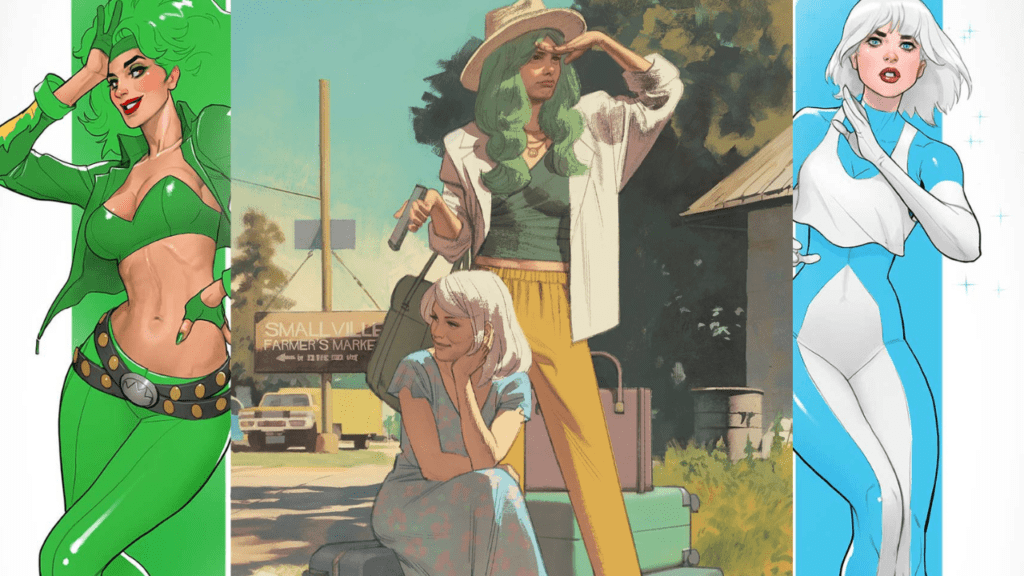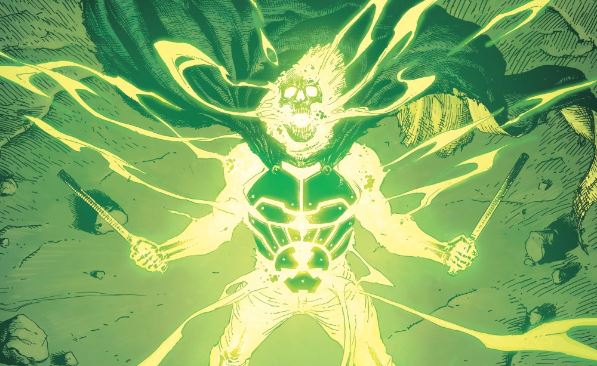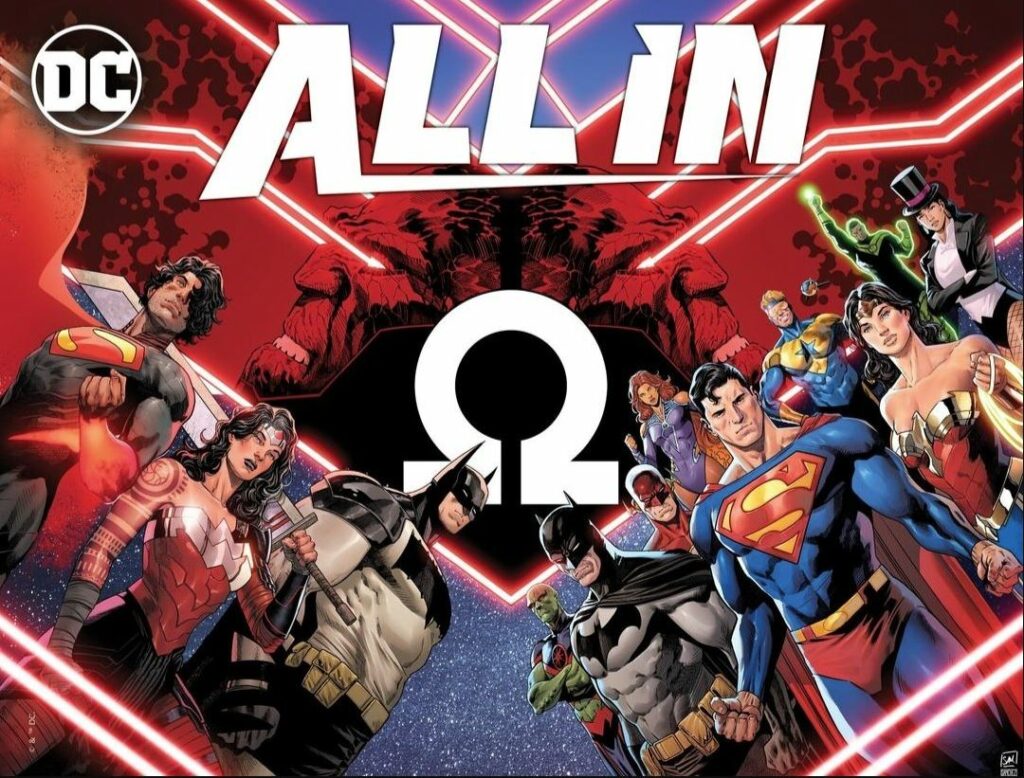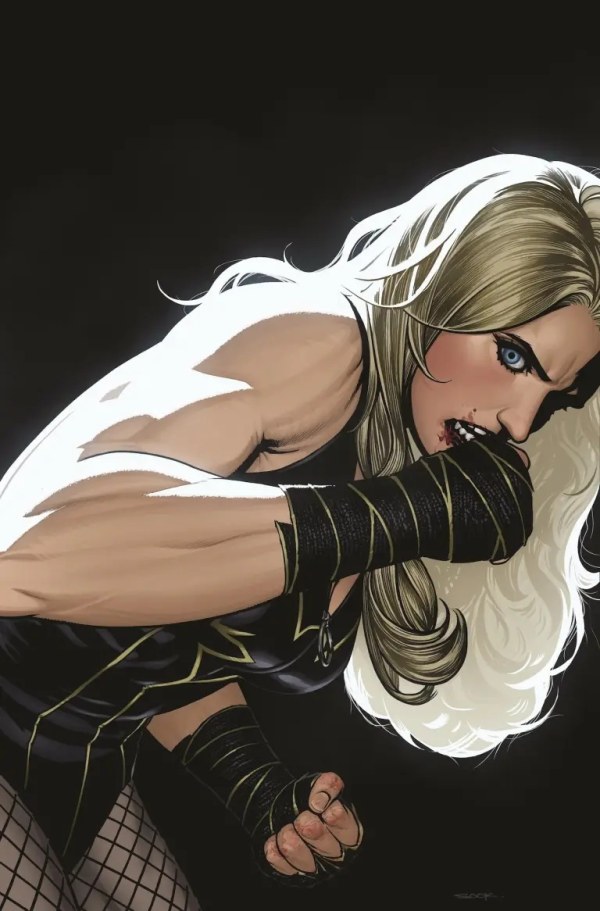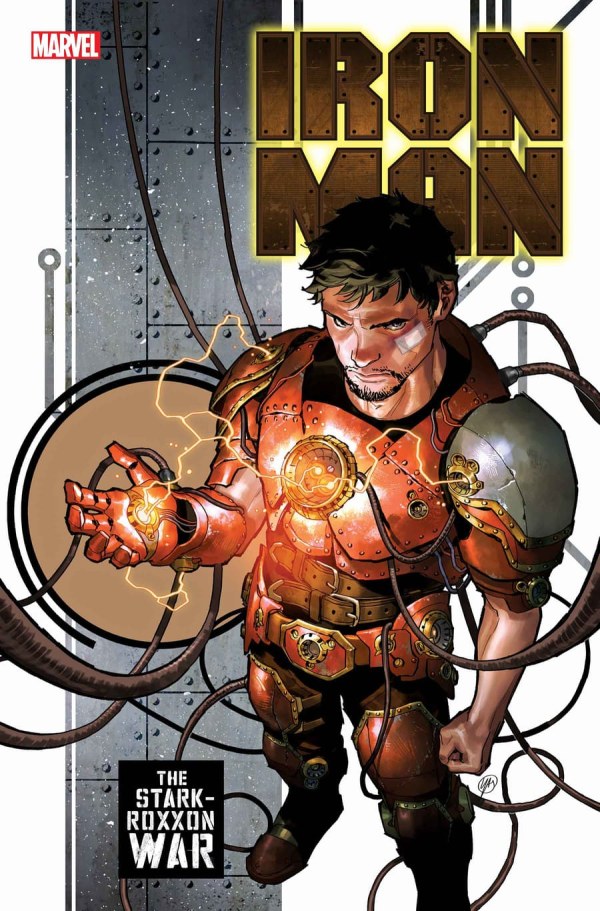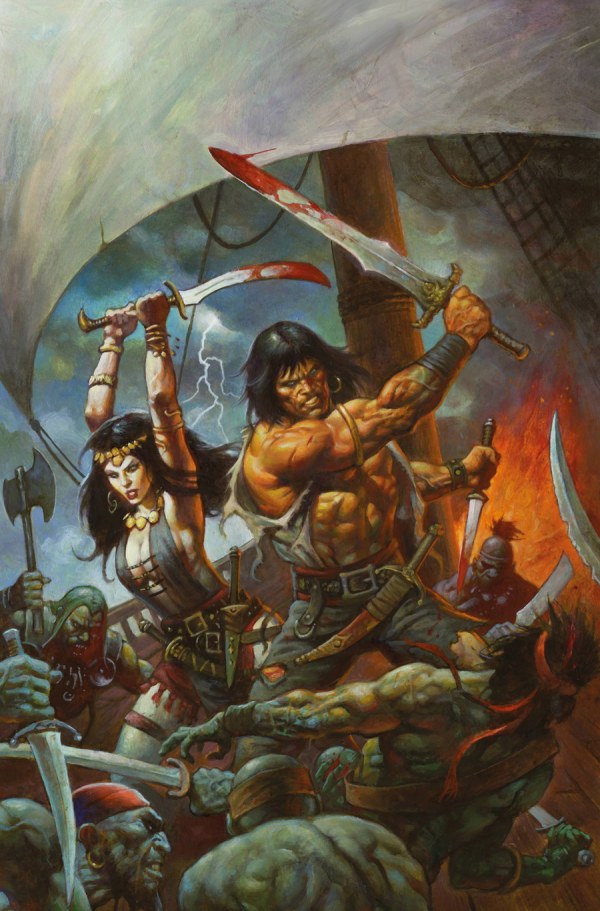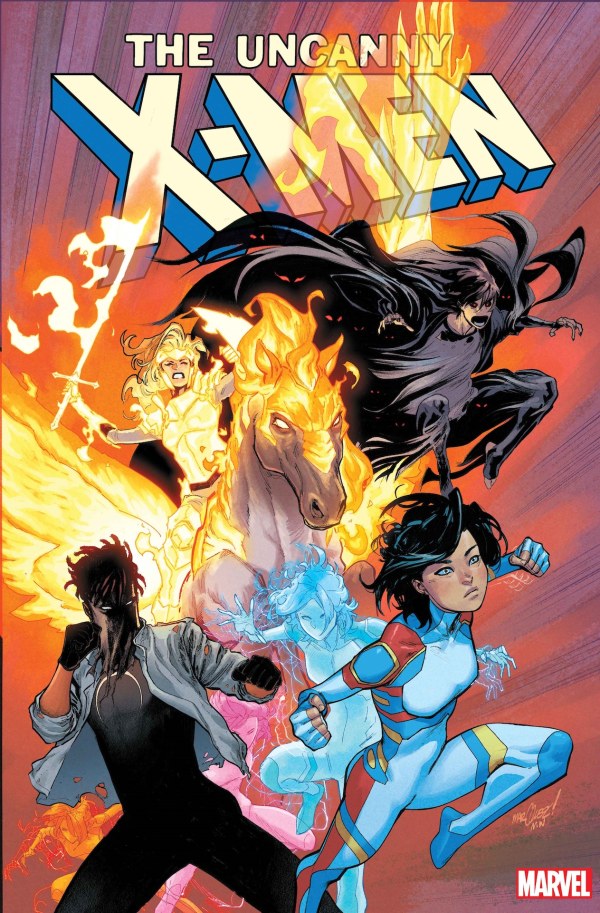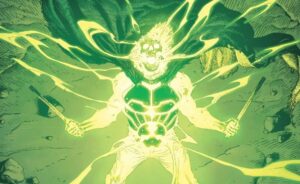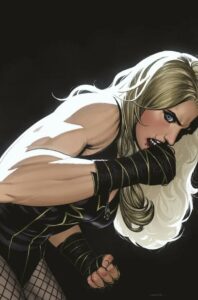Superhero comics, and particularly DC Comics, have a long and complex history of queer coding within their many pantheons.
Beyond the implication that nearly all superheroes serve as a metaphor for closeted truths – with openly gay characters and straight characters alike donning masks, costumes and alter egos, all to protect an implicitly more vulnerable secret identity – there is a long, long list of superheroes whose writing has, intentionally and otherwise, been read with layers of queer subtext.
Fire & Ice: Welcome to Smallville #2 picks up on one pair of such characters, who’ve been practically and curiously inseparable since their debuts in the 1980s, and explores that subtext with new energy.
A Brief, Queer History of the DCU – Fire & Ice Edition
If your only familiarity with DC Comics, and its relation to queer representation, was based on the last few years then you’d be forgiven for thinking that their publishing has always been remarkably diverse – especially in relation to sexuality.
In actuality, queer characters have largely existed either at the margins of continuity for most of the last 80 years. It wasn’t until the late-80s that the Comics Code Authority even repealed its statute forbidding the presence of gay characters, so you can imagine how recent the history of queer superheroes has been. Notable gay characters like Kate Kane (Batwoman), Raymond Terrill (The Ray) and Renee Montoya (The Question) are technically still quite recent additions, being introduced as queer only in the last few decades. Even then, next to none of them ever headlined their own solo series until the 2010s.
As a result, many readers – queer and otherwise – took to reading between the lines to find the world that they knew hidden within this world of gods and monsters.
There are a few characters that fans have headcanoned as gay or bisexual for years. Conner Kent, Tim Drake and Jason Todd as Red Hood are all prominent heroes that fans have read queer subtext into. In Jason’s case, while his bisexuality was never confirmed on the page, writer Judd Winick has gone on record confirming his plans to reveal this aspect of the character, had DC let him. And in Tim’s case, that popular headcanon was recently made official canon, as Tim came out as bisexual in a storyline that spun out of Infinite Frontier.
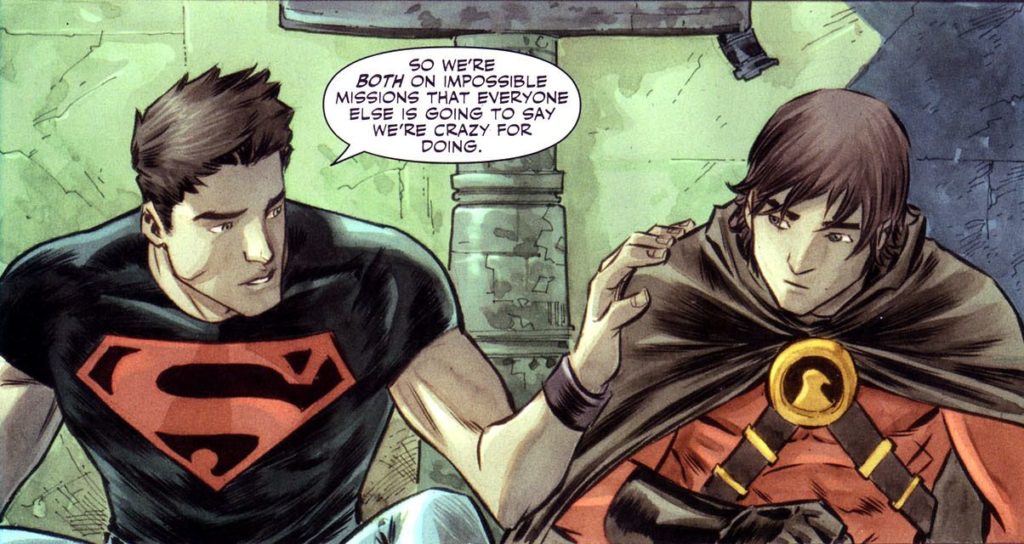
Oftentimes, this popular reading of certain characters comes from how their significant relationships, both with the opposite sex and the same sex, are characterised on the page. Tim and Connor, for example, share more than one scene that fans have read deeply homoerotic tension throughout their Teen Titans years.
It’s exactly this type of portrayal that has underscored most of Fire and Ice’s history as superheroes.
Since their debuts in Superfriends and Justice League International, the pair have always been close – extremely close. They come as a matching pair, their concerns for one another on the battlefield and in their personal lives seemingly extends beyond that of friendly interest, and the presence of on-again-off-again boyfriend Guy Gardner in Ice’s life causes no shortage drama and tension within their “friendship”. Now normally I’d be slow to assume that close friends of the opposite sex are meant to be read as gay in comics – it’s positive to see that significant, loving relationships can occur between people without a romantic or sexual component. However, in this case, the bevy of characterisation tips the scales.
Add onto that the extreme reaction Fire has when Ice meets an untimely end during the JLI years, and the subsequent psycho-sexual soap opera that unfolds between her and fellow hero Icemaiden who (in true comics fashion) pretends to be Ice in order for Fire to resolve her feelings of grief through sexual release, and you can see why people read them as being more than just gal pals.
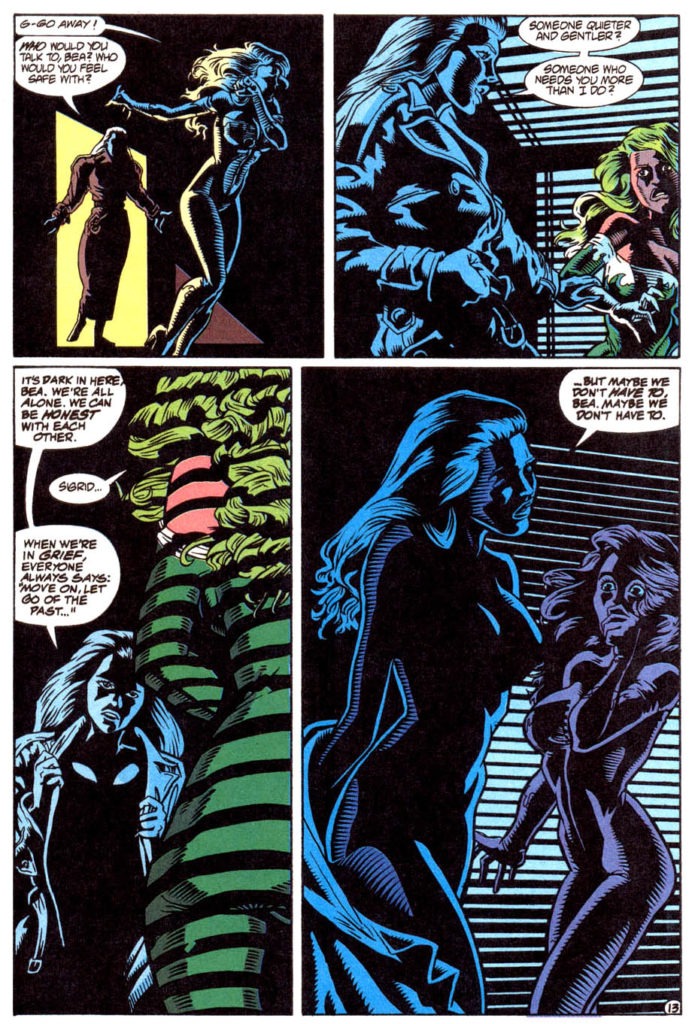
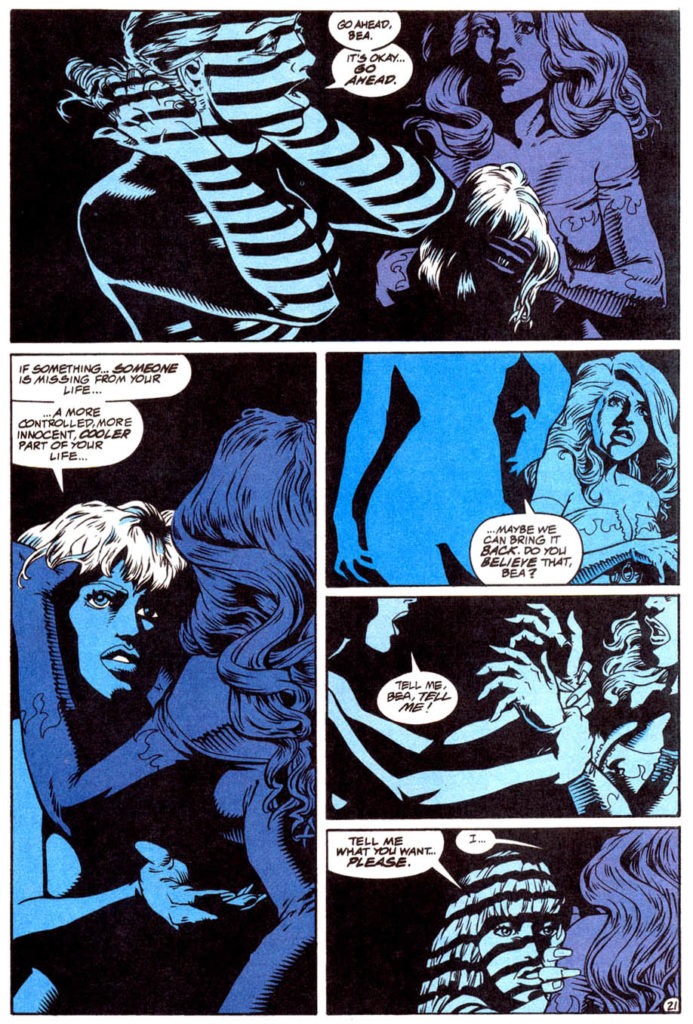
All of that is to say: when Fire & Ice: Welcome to Smallville #2 centres on the growing tension brewing between Tora and Bea, tension exacerbated by the presence of a new woman in Tora’s life, the queer subtext practically jumps off the page.
Part 1: For Everything in Ice’s Closet, There’s Not a Single Mirror
Before Fire & Ice: Welcome to Smallville #2, as far back as the prelude story in the Power Girl Special, Ice has been set up on a journey of self-discovery.
Beginning as an edict from a genial Superman, Fire and Ice have effectively been benched and asked to retreat to Smallville in order to figure out how best to work through their various issues before returning to the spotlight of a public superhero career. Now, having settled into the lifestyle and pace of small-town America, both women have nothing but time to evaluate things.
For Ice, this has led to confronting a few hard truths. The first is that, outside of the Justice League International (and particularly Fire), Ice has little in the way of friends – especially regular, non-metahuman friends. Second, that superhero life? She’s not sure if it’s really for her. And more importantly, she’s not sure if it’s ever been for her. It’s certainly been for someone, though.
‘When you have these gifts, you feel like it’s your responsibility to use them. To fight to make the world a better place.
But maybe fighting doesn’t make the world a better place.
Sometimes I think I’ve only stuck with it this long because of Bea. Joining the league was her dream. It’s all been her dream.’
Ice, Fire & Ice: Welcome to Smallville #2
There are obvious undertones here of the stereotypical, self-effacing partner, whose sacrificed much for the most person most important in their lives, and lost themselves in the process. That she can only see this when a new woman, from a new town who shows her a new world, disrupts that endless cycle of pretence only underscores the suggestion of a kind of sapphic awakening. However, writer Joanne Starer takes that familiar trope and sets it cleverly against the backdrop of cape-and-tights soap opera, opening up a new avenue to explore self-exploration.
After all, the self-discovery of one’s sexuality is not always linear. It can often be brought about by a parallel but altogether tangential exploratory experience. In real life, generalised feelings of inauthentic experience in areas like work or family can often jostle free the idea that maybe that square-peg-round-whole sensation originates from somewhere more internal.
In this instance, Starer is building on the foundations laid out by DeMatteis and Giffen in the original Justice League International, where the idea of a superhero career is literalised to the point of framing the JLI title like more of a workplace comedy than a high-stakes cosmic drama. She uses that sense of professional unfulfillment, layered into the cosmically-significant dramatics of defending the Earth, to craft a keenly relatable sense of despondency within Tora that both suits the superhero genre while also grounding it in the mundanity of literary Realism.
Simply put: these are big problems, but they’re big because they’re small – everyone’s got to deal with them, and there’s no solution as easy as punching the bad guy. Self-actualisation is much more complicated, but can feel just as insurmountable a challenge emotionally as superheroes typically face physically.
It’s shadow-play, where the dance of separating Ice from Fire casts an impression on the wall of the shape of the separation of Tora from Bea. Starer is exploring how the disentanglement of one, shared identity forces the burgeoning individual to reconsider who they are separate from that pairing, and what the nature of that pairing was to begin with.
Of course, none of this is necessarily (or explicitly) tied to any kind of repressed queerness, but it’s worth considering how Ice is framed within the issue, if not her history as a character as a whole. There’s the awkward tension between Ice and Fire over their present estrangement; the introduction of a new rival, Rocky Rhoades, for Tora’s attention (and affection), the relationship between which Fire emphatically declares, ‘I don’t like this’ as they leave together for a date of book-buying and antiquing; and of course, the fact that Ice specifically decides to dress up for their day out together.
Part 2: Rocky Rhoades Ahead for Fire & Ice
The characterisation of Rocky reflects all the things that makes Fire such a complimentary partner to Ice, while also eschewing all the traits that are currently causing discord in the relationship.
Natacha Bustos ensures that Rocky’s visual design, just like Fire’s, evokes a sense of femininity that is contemporary with the era the character originates from. More than that though, she uses her design to comment on and respond to Fire’s.
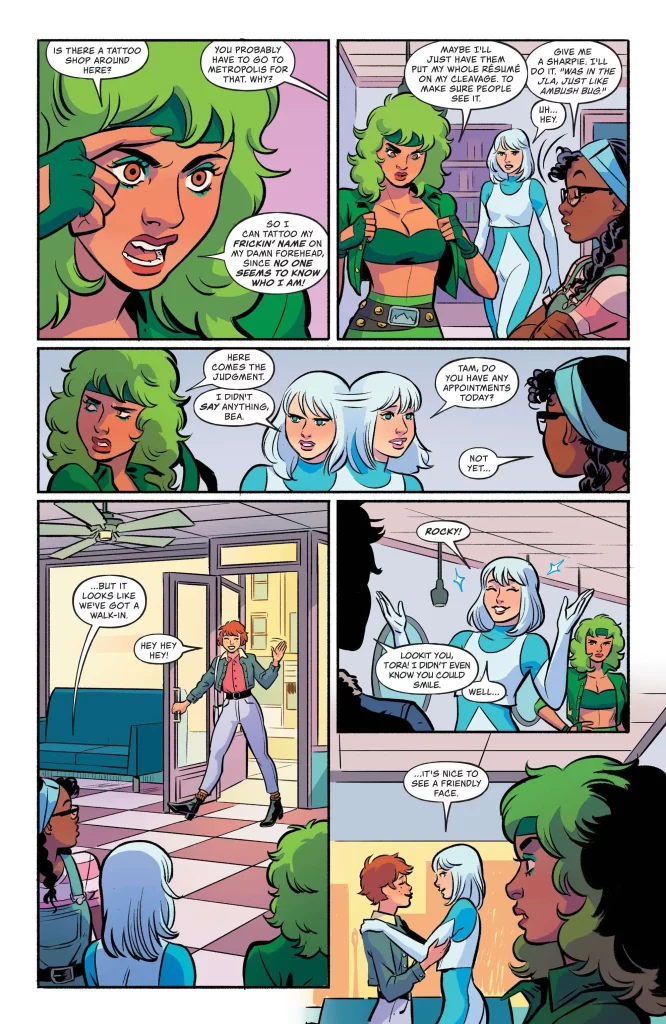
Bea’s design is marked by the wild hair and audacious eye shadow of the ’80s, the massive belts, shoulder-padded jacket. For Rocky, while she echoes the skin-tight attire on her legs and the strong choice in jacket, she is also distinct from Fire. Her short hair feels like a refutation of the larger-than-life visuals of superheroes; her fully buttoned-up shirt a stark contrast with the skin heavy tops Bea wears.
It’s the type of juxtaposition that stirs thoughts of women characters designed with and for the “male gaze” versus the “female gaze”. The emphasis on Bea’s physical appearance throughout the years – her varying levels of clothing, the focus on her chest and her more sexually provocative design in comparison with Ice’s relatively conservative appearance – renders her very much as the object of a (presumed male) reader’s sexual desire. Rocky, by contrast, feels like she was written/drawn for women, particularly gay women. She is not overtly sexualised in any of the ways Fire is, and her visual design is just gender non-conforming enough that she can be seen to represent this mode of femininity that exists outside of traditional paradigms – and Ice is clearly attracted to that, whether it’s just the idea or the person itself.
Also, if I can point this out in the most delicate way I know how: Rocky Rhoades is the gayest woman I’ve ever seen in a DC Comic. If you asked someone to describe what a bookish, Millennial lesbian looked like, Rocky Rhoades would be the first thing you’d come up with. And she takes Ice on a date to buy second hand books? A more obvious visual metaphor of queerness coming to whisk Ice away to lands unexplored there is not.
Subtlety is more dead than Ice was in the ’90s.
As a result, Rocky’s interruption of Ice and Fire’s traditional dynamics acts as a kind of catalyst for the exploration of both of their romantic and sexual identities.
In Ice’s case, by introducing some distance between herself and Fire she is able to more honestly examine her own, singular identity and determine what it is that she is attracted to, textually-speaking in terms of her “professional” life as a superhero, subtextually in terms of her relationships. Consider again Ice’s monologue from earlier: it’s clear that, beyond just the idea that she’s living the life Fire wants, she’s also living a life confined by conventional standards of behaviour. ‘When you have these gifts, you feel like it’s your responsibility to use them,’ she says. It’s so clearly evocative of the classic ‘with great power, there must also come great responsibility’ maxim from Spider-Man, something that’s become a cultural standard of what a hero should be. And to be precise, it’s not that Ice is rejecting that altogether, much in the same way she’s not rejecting a life with Bea altogether. She’s just objecting to how these narrow, normative views of the world can stifle an individual’s desire for honest expression.
In Fire & Ice: Welcome to Smallville #2, Rocky represents the opportunity for Ice to step outside of the shadow cast by her legacy as a superhero. She can self-actualise outside of what she “should be” in the eye’s both of other characters and likely some readers. By introducing this civilian character, whose visual design destabilises traditional heroic dynamics and challenges normative ideas of gender, Starer and Bustos begin to textualise long-standing elements of subtext.
If maintaining the superhuman elements of heroism (the costumes, the adventures, the powers) can be seen as a kind of social performance, then finding an alternate mode of being that is more authentic to the character’s true self while retaining their heroism can be seen as a very metaphorical form of coming out. Rather than falling back on heteronormative behaviours like dating straightest-man-alive Guy Gardner, or remaining “close friends” with Fire, Ice’s queerness is able to escape the realm of subtext much in the same way she herself is trying to escape the world of flying men and cosmic warlords.
Part 3: The Fear of Self-Discovery, The Comfort of the Known
If heteronormativity in Fire & Ice: Welcome to Smallville #2 is presented as a cage that Ice is trying to break out of, then so too does it double as a flame for Fire’s moth, parsing some modicum of comfort for a woman disrupted despite the repression it otherwise causes.
Throughout the issue, Fire exhibits great jealousy over Ice’s efforts to carve out a new, non-superpowered life for herself; one enabled by the entrance of Rocky, and one that rejects the familiar paradigms that Bea and Tora have come to settle in.
Fire’s reaction to all of this is dramatic, and spun out in a far more exaggerated way than one would expect a friend to react to another friend’s desire for independence. Couple that with her response to Ice’s actions, to find the nearest bar and flirt with a new, conventionally attractive potential partner, and the subtext is practically clawing its way off the page.
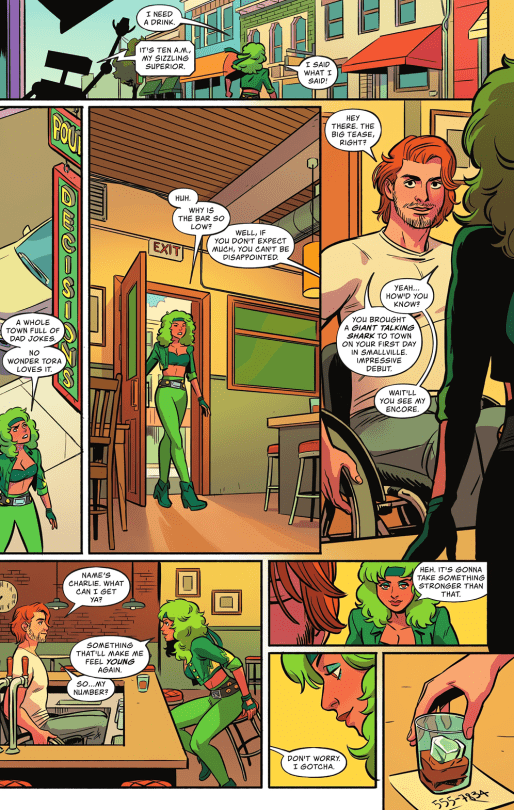
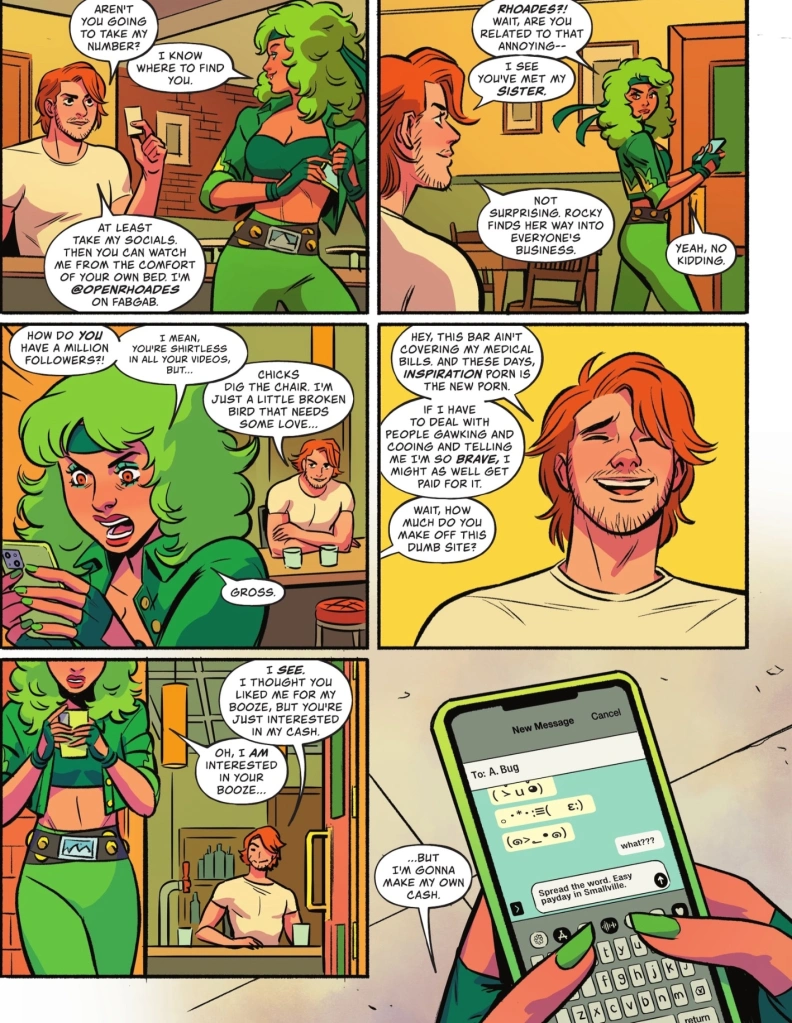
What’s worth examining however is not the setup of a very classic trope, that of the drunken rebound turned emotional complication, but the gender politics of it all. Unlike Ice, who distances herself from Fire and by extension the kind of strictly-implicit queerness that constantly gestures to itself only to jump directly back from the spotlight once it’s pointed in its direction, Fire’s actions don’t serve to disrupt conventional ideas of sexuality at all. Instead, while Ice abandons a repressed form of queer expression for the potential of something much more liberated, Fire turns not to queer romance at all but rather to a straight fling.
Upon entering the bar, she flirts aggressively and explicitly with the barkeep, Charlie, who it turns out is Rocky’s brother. A few points here: first, Bea’s advances on Charlie are much more sexually explicit than the tension between Tora and Rocky. Not only does this point to the general ease with which Bea is able to slip into heteronormative behaviour without fear of consequence, it also highlights how, in the face of a non-normative mode of sexuality, people can sometimes find it preferrable to reaffirm their position within more socially acceptable forms of sexual expression rather than reconcile with the liberating yet inherently disruptive possibility of queerness.
In this case, Fire chooses to respond to these feelings of (it seems to me romantic and therefore gay jealousy) by effectively saying as loud as she possibly can that she’s straight – so straight she’ll jump on literally the first attractive man she finds. And, not to dismiss or erase the likelihood of Fire’s bisexuality, it’s important to consider cultural contexts here. While the isolated action of approaching Charlie in this manner is highly heteronormative, that is not to suggest that presenting in this way is something only straight women can do. However, given the general acceptance of bisexual women through the similarly general fetishisation of their dual attraction, it is possible that a bi woman may act in this way to justify her own internalised sense of biphobia – trying to pave over the evidence of one type of attraction with an over-abundance of evidence of another.
In this way, Fire suggests a fascinating counterpoint to Ice in Fire & Ice: Welcome to Smallville #2‘s exploration of queer sexuality. Where Ice’s characterisation demonstrates how it’s possible for these characters, and by extension queer individuals today, to find new modes of self-expression, Fire also illustrates the anxiety that proposition can hold. Despite the self-actualisation that Ice is able to gain from this kind of romantic exploration, Fire is blocked. Regardless of the harm and limitations of their previous dynamic – one whose true meaning existed in an almost entirely closeted form – it was also one that was stable. Fire knew who she was when she was with Ice, even if who she was couldn’t be all she was. Once separate, Fire has to start answering some difficult questions, and she can’t hide behind the veil of “close female friendship”. They’re questions that, in her case and the case of many other queer individuals, often feels too difficult to confront face-on, as years of internalised homophobia would force Fire to grapple immediately with an intensely painful bout of self-reckoning.
Instead, she finds greater safety in an exaggerated version of herself – one that is sexually liberated in one sense, but only within strict, traditional boundaries.
Part 4: Reconciliation
Fire & Ice: Welcome to Smallville #2 is a long way away from the end of this series. Bea and Tora have lots left to conquer in their increasingly quirky town, with the arrival of Jimmy Olsen, the running of their business, and the reckonings yet to take place within their personal lives. And yet, it feels like even so far, Starer and Bustos are doing some incredibly strong and layered work to unpack years of subtext and fan interpretation.
Where this issue succeeds is its readiness to explore the queer subtext of the titular dynamic without flattening out the relationship. Starer and Bustos’ work allows for the innate differences of the characters to shine through, emphasising their exploration of sexual repression by finding commonality within the two characters without reducing it to one queer experience mirrored in two women. Both characters have distinct feelings about and responses towards the conflicts present, and as such manage to represent a diverse range of queer experiences of self-discovery.


